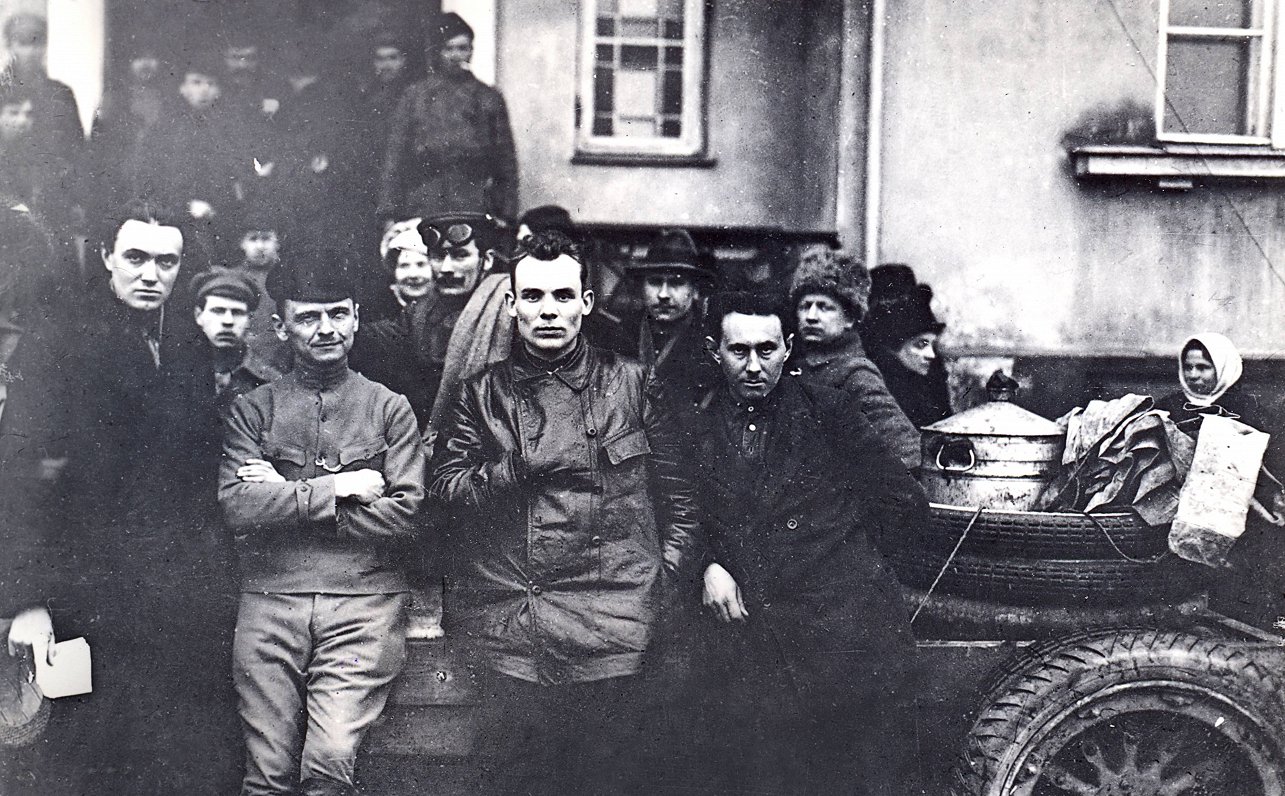The most important facts:
1. Fighting saboteurs
The Cheka was set up for a number of reasons. First of all, there was need for an institution that would fight 'counter-revolutionaries', or the real and imagined enemies of the Bolshevik regime. Until then, this was carried out by the Military Revolutionary Committees, but most were quickly dismantled after the Bolsheviks took power. Another important reason to set up the Cheka was to fight former officials of the felled government, who often refused to work for the Bolsheviks. The officials' protests - called 'sabotage' by the Bolsheviks - were so effective, that there was threat that the Soviet power would be left all but paralyzed.
Bolsheviks tried to overcome this in several ways. They intimidated officials to get them to work, and recruited new personnel to replace them, often from minority peoples like Jews, Poles, and Latvians.
2. A temporary solution
Cheka was envisioned to only serve as a temporary institution. However, temporary solutions often become permanent, and the Soviet secret police continued its existence under different guises up until the fall of the regime in the 1990s. In its 70 years of existence, the Cheka, the NKVD and the KGB carried out repressions against dozens of millions of Soviet citizens, murdering millions.
However, until as late as September 1918 when Lenin survived an assassination, and the Red Terror began officially, the Cheka had a rather 'humane' character and mostly eschewed mass capital punishment.
3. A state within a state
Cheka was not the only repressive institution of the Soviets. The People's Commissariat for Internal Affairs (NKVD) was established on November 9, 1917. It was first lead by Grigory Petrovsky, of Ukrainian descent. The Bolsheviks reorganized the police, making it into a subservient institution, and set up a network of revolutionary tribunals. However, the Cheka towered over all these institutions, as it was completely autonomous from the local institutions (local soviets and party organizations). Formally, it was under direct control of the Soviet authorities, however it often acted completely on its own accord. That is why, after not even a year of existence, part of the communist leaders demanded whether dismantling this institution or handing control over it to the Commissariat for Internal Affairs.
Pointedly, the Soviet Latvian state headed by Latvian communists, in 1919 became the first one to refuse setting up a Cheka structure, and put it under the control of the Commissariat for Internal Affairs.
Why is it important to know?
As in many other Soviet institutions, there were initially many minority representatives working there. The Poles Felix Dzerzhinsky, Józef Unszlicht held leading positions at the Cheka, as did the Latvians Jēkabs Peterss, Kārlis Pētersons (both associates of Dzerzhinsky), and Mārtiņš Lācis. There were also many Jews and people from other nationalities. That's why many opponents of the Bolsheviks called it the "Jewish power", and they also pointed out that there were many Latvians working at the Cheka.
Indeed, there were initially many Latvians working at the Cheka. When the Red Terror started in September 1918, out of 781 people working at the central Cheka in Moscow, 278 were Latvian.
Out of 70 commissaries of the Cheka, 38 were Latvians. In late 1918 a curious situation arose when the management of the Cheka was forced to forbid their Latvian employees to go to Latvia, as it may have paralyzed its activities. It turned out that most Latvians just wanted to go back home, not work for the Soviet secret service. It was understandable, as work for the Soviet institutions, to many Latvians, was the only available means of sustenance. It was particularly true of the hundreds of thousands of Latvian refugees for whom the Bolsheviks refused to pay benefits. To avoid starvation, they had either to join the ranks of the Red Latvian Riflemen, or look for work at Soviet institutions. Millions of other refugees, among whom many were Jews, Poles, Ukrainians, Lithuanians and Belarusians, faced a similar choice.
The economic standings weren't the only reason why minorities in Russia actively collaborated with the Bolsheviks. Jews, Poles, Latvians and other nationalities living in what was the western Russian Empire were highly educated, but often faced discrimination. The Jews were only allowed to live inside the so-called Pale of Settlement in western Russia, and often faced violence based on their ethnicity (the so-called 'Pogroms'). While Poles, Lithuanians and Latgalians weren't allowed to print and circulate texts written in the Latin script. Poles and Lithuanians also faced restrictions to obtain university education.
All minorities, including Latvians, also underwent the policy of Russification in the late 19th and the early 20th century. Latvians and Estonians, one of the best-educated peoples in the Russian Empire, had little chance to compete with the local Germans, who enjoyed a privileged standing. The brutal suppression of the 1905 revolution caused further hatred against Russia and the Tsarist regime. It was followed by the horrors of war, the government's indifference against people living on the front line and their refugees, as well as the refusal of the Russian Provisional Government to enact land reform, put an end to the war and grant autonomy to the 'little' peoples living under their rule.


























